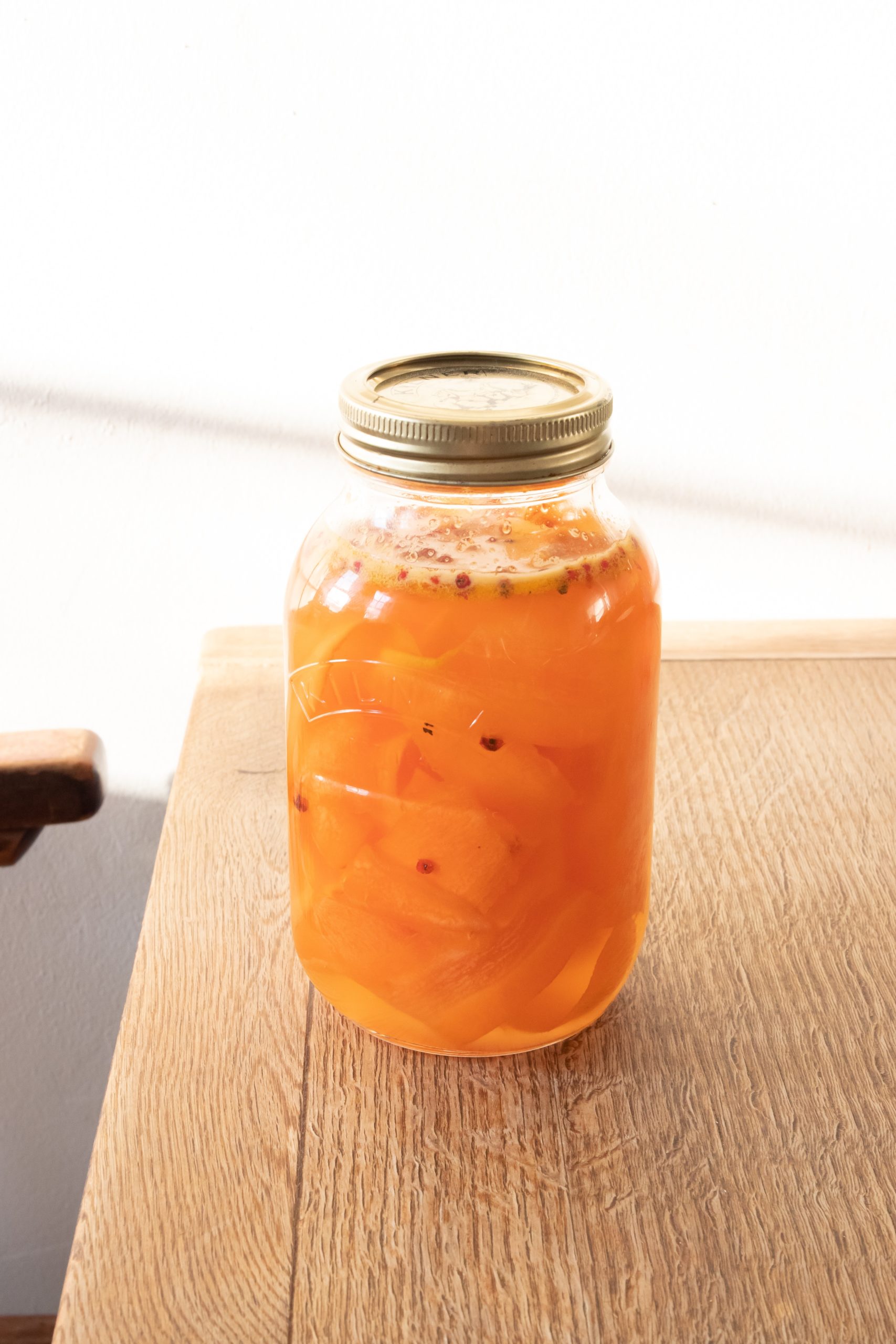By Allison Howell
Clostridium botulinum might not compete with Salmonella or e. Coli for the most common cause of foodborne illness, but it might just be one of the deadliest. Botulism is most often caused by a toxin created by bacterium Clostridium botulinum (other types of Clostridium bacteria can also produce this toxin, however it is rare). When ingested, the toxin targets nerves and can lead to muscle paralysis, difficulty breathing or even death (About Botulism | Botulism | CDC). The bacterium, Clostridium botulinum, is a rod-shaped anaerobic bacteria and thrives in environments without oxygen such as canned foods or beneath the surface of soil. However, clostridium botulinum has a secret superpower that allows it to survive in conditions that would otherwise prove fatal to bacteria: it is capable of undergoing a process called sporulation. Sporulation is a process where bacteria transform into a “nearly dormant” state to protect them from harsh environmental conditions or outside stressors (Sporulation | Encyclopedia.Com). During sporulation, C. botulinum undergoes a series of steps that act to preserve its genetic material and produce a sturdy shell-like structure that protects itself from conditions, which could otherwise kill it. While in spore form, C. botulinum has no metabolic activity and thus does not require access to usable energy sources to survive. The ability of C. botulinum to activate the sporulation process in response to external stimuli, help make C. botulinum a very hardy microorganism.
So, it is no surprise to learn that Clostridium botulinum has likely been around for a very long time. One of the first historical accounts to indicate Clostridium botulinum in food poisoning took place in early 1800s Germany. In response to reports of “sausage-poisoning,” Justinus Kerner who was a district medical officer, pursued research into the cause. By 1822, he had “published the first accurate and complete descriptions of the symptoms of food-borne illness.” But it wasn’t until almost 1900, when another botulism outbreak occurred, this time associated with smoked ham, and led University of Ghent Professor, Emile Pierre van Ermengem, to investigate and identify the bacterium at fault (Erbguth).
The association of the illness-causing agent with smoked meats and sausages led to Clostridium botulinum receiving its name from the Latin word “botulus” meaning sausage. However, some still attribute the naming of the bacterium to the sausage-like rod shape of the bacterium when it is viewed under a microscope (Erbguth).
Flash forward 20 years, and botulism remains a foodborne illness of concern. Many food processing technologies and food safety measures have proven effective at reducing the ability of C. botulinum to grow. But the bacterium’s omnipresence in the soil and ability to survive in adverse conditions, have prevented us from being able to write it off as a disease of the past.
To this day, botulism remains a threat to human health, but it is no longer primarily associated with sausages and home-produced meat products. The spores help C. botulinum survive in adverse environments for long periods of time can be “woken up” when the conditions are just right and trigger a return to its toxin-producing, illness-causing bacterial form. The CDC identified conditions that have low or no oxygen, low acid, low sugar, low salt, or certain temperature and water activity ranges can motivate Clostridium botulinum spores to undergo germination. A process that shifts Clostridium botulinum back into its metabolically-active, toxin-producing bacterial form. Several of these conditions can be generated when mistakes are made during the home-canning, preservation, or fermentation processes.
In 2019, the CDC shared a report of a recent botulism outbreak in New York City. In June 2018, three women showed up at hospitals with symptoms of nausea, slurred speech, blurred vision, shortness of breath, and “thick-feeling tongue.” All three of them women later required intubation, and two of the three also required mechanical respiration. The women were suspected of having botulism, and blood tests confirmed the presence of botulinum neurotoxin (BoNT). The CDC acted swiftly to authorize the administration of antitoxin, and within 12 hours of arrival at the hospital, all of the women received the antidote. The antidote did its job, but the toxin had already gotten to work disrupting many important bodily processes. All three women remained in intensive care for several weeks before recovering (Bergeron).
It was later identified that roughly 14 hours prior to showing symptoms and seeking care, the women had eaten potato salad made with home-canned peas (Bergeron). While C. botulinum was originally named for its association with fermented sausages, this case highlights a shift in the types of food that are commonly found to be associated with the botulism-causing bacteria. Now, it is more common to see botulism associated with fruits and vegetables that are home-processed (Centers for Disease Control and Prevention).

Image by Geraud Pfeiffer by Pexels
Food processing and food safety research has come a long way in the past 200 years, and there is a plethora of possible reasons that may have contributed to changes in the types of foods we see implicated in botulism outbreaks.
References
[1] “About Botulism | Botulism | CDC,” Jun. 01, 2021. https://www.cdc.gov/botulism/general.html (accessed Nov. 03, 2021).
[2] “Sporulation | Encyclopedia.com.” https://www.encyclopedia.com/science-and-technology/biology-and-genetics/cell-biology/sporulation (accessed Nov. 07, 2021).
[3] F. J. Erbguth, “Historical notes on botulism, Clostridium botulinum, botulinum toxin, and the idea of the therapeutic use of the toxin,” Mov. Disord., vol. 19, no. S8, pp. S2–S6, 2004, doi: 10.1002/mds.20003.
[4] G. Bergeron, “Notes from the Field: Botulism Outbreak Associated with Home-Canned Peas — New York City, 2018,” MMWR Morb. Mortal. Wkly. Rep., vol. 68, 2019, doi: 10.15585/mmwr.mm6810a5.
[5] Centers for Disease Control and Prevention, “Botulism in the United States, 1899-1996,” 1998. Accessed: Nov. 07, 2021. [Online]. Available: https://www.cdc.gov/botulism/pdf/bot-manual.pdf

Allison Howell | Linkedin
SMF Blog Writer
Allison Howell is a PhD student in Food Science and Technology at The Ohio State University. She earned her Bachelor’s degree in Microbiology and minors in Pharmaceutical Science and Health, Environment, Risk, and Science Communication also from The Ohio State University. Her research focuses on understanding how consumers make decisions about food safety, and how government and non-profit organizations can create policies for balancing risks across food safety, food security, and food waste. Allison loves to bake and is always researching and trying out new swaps to make recipes more allergy and dietary restriction-friendly






Leave a Reply